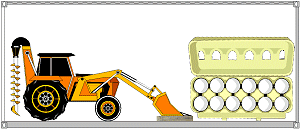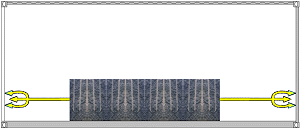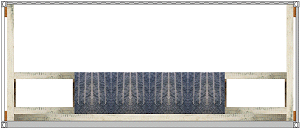 |
Do not pack pressure-sensitive loads together with loads which exert pressure! |
If the rule cannot be observed, steps must be taken to ensure that no pressure can be exerted on the pressure-sensitive goods, or that the pressure can be sufficiently reduced so that it cannot exert any damaging influence on the goods.
Appropriate measures must be taken if the following packing rule is not complied with:
 |
Do not pack pointed and sharp-edged goods together with goods which might be damaged by them! |
Either pad the pointed and sharp-edged parts or protect the sensitive goods against damage by using appropriate packaging or dunnage.
There is no alternative to this packing rule:
 |
Do not pack foodstuffs together with toxic substances! |
Failure to comply with this rule puts human life at risk or at least poses a real risk of (serious) damage to health. It may also represent a breach of the law which could lead to criminal proceedings.
The situation with this packing rule is different:
 |
Do not pack heavy goods with fragile goods! |
In practice, this rule will have to be broken more frequently. The risk to fragile goods can be eliminated by taking appropriate load securing measures for the heavy goods.
A very important packing rule is as follows:
 |
Chemically incompatible goods must not be packed together! |
This rule relates primarily to the entire range of dangerous goods - but it also affects perfectly normal goods which can be damaged or have their marketability reduced by chemical reactions. Chemical incompatibility does not always represent a danger to humans, animals or the environment. The reader must understand that this Handbook cannot offer detailed information on loading dangerous goods.
Special packing rules are dealt with in other sections of this book which do not have to be mentioned here. To take an example: cargoes that can be damaged by magnetism, e.g. floppy disks, hard disks etc. must not be packed together with (in immediate proximity to) permanent magnets or similar. For advice on this, see for instance the section on "Packaging and marking".
The following stowage rules are contained in Annex 5 of the CTU guidelines, although with different illustrations, in the form of "Dos" and "Don'ts":
 |
DON'T concentrate heavy loads on small areas of the floor |
 |
DO distribute heavy loads over a large floor area |
Further information on distributing loads is dealt with in the section on load securing aids under "Wood" and under the line loads of containers.
 |
DON'T secure loads in a way that produces heavy forces on small areas of the inside structure of a unit! |
 |
DO secure loads in a way that forces are distributed over a large area of a unit! |
This demand can be met by using appropriate squared lumber or other sufficiently strong materials with a large surface area.